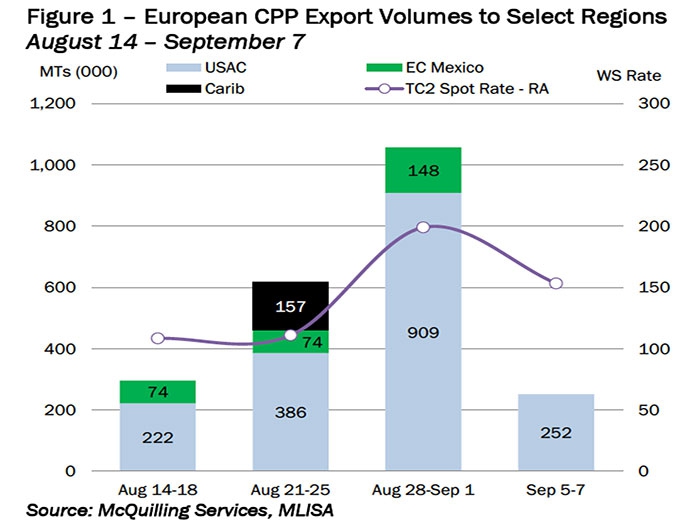
McQuilling analyzes impact of Hurricane Harvey on tanker market
Written by Nick Blenkey
SEPTEMBER 8, 2017 — McQuilling Services, LLC has issued a Tankers Industry note analyzing how the disruptions from Hurricane Harvey have impacted the tanker markets and what may be expected from Hurricanes Irma and Katia.
For Hurricane Harvey, the impact on tanker markets was felt in both the clean and dirty segments. With the storm making landfall in the heart of the U.S. Gulf’s refining and oil terminal operations, there was a complete closure of 15 refineries ranging from Corpus Christi to Port Arthur, representing 25% of total U.S. capacity. Additionally, both land-based and offshore crude oil production was disrupted, decreasing the level of available supply for domestic consumption and exports. The pricing structure of refined products turned bullish due to declining supply amid heightened demand, while crude pricing felt downward pressure as a result of collapsing refinery runs.
Tankers loading clean product cargoes in the US Gulf were put on hold (and to some degree remain on hold), necessitating the need for U.S. Gulg export markets, including Mexico, to source barrels from alternative regions, such as Europe (Figure1), but also East Coast Canada and surprisingly New York.
The Mexican market doubled its demand for European refined products, namely gasoline in the week of August 28th to September 1st; however, the most significant increase in European exports was for the U.S. Atlantic Coast, which according to McQuillings fixture database recorded 909,000 tons of clean product imports booked during the days of Hurricane Harvey. As a result of the increasing volumes out of Europe, the position list in the region tightened, supporting a week-on-week increase in TC2 rates.
For the trading week of August 28, TC2 averaged WS 199, with spot cargoes trading up to as high as WS 245, before retreating back down to WS 150 during the current week (Figure 1).
“Using our remotely-sensed vessel position data, we analyzed the behavior of MR owners trading the Atlantic route,” says McQuilling. “We noted two tankers that ballasted to the Continent following discharge in the New York region, with each making a U-turn after initially heading to the U.S. Gulf. Owners in the US Gulf largely remained in the region, awaiting normalization of operations, although our distillation of satellite data showed three leaving the Gulf in favor of Caribbean loadings, including taking a cargo from St. Croix to Mexico, while one courageous owner decided to ballast out of the Gulf and directly into the Continent’s rising market.”
The impacts from Hurricane Harvey were also felt on the crude trade, both into and out of the U.S. Gulf.





Leave a Reply
You must be logged in to post a comment.